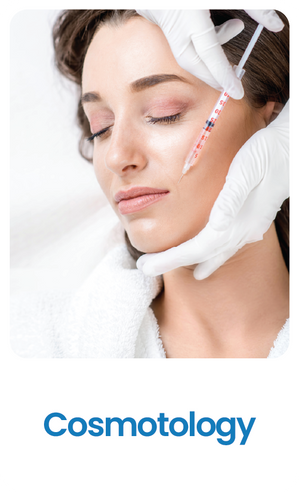Neck Lift
A neck lift, also known as lower rhytidectomy, is a cosmetic surgical procedure designed to improve visible signs of aging in the jawline and neck. It helps to tighten loose skin, remove excess fat, and restore a more youthful, contoured neck appearance.

Why Neck Lift Surgery?

As we age, the skin on the neck begins to sag due to the loss of elasticity and weakening of underlying muscles. Fat deposits, loose skin, and muscle banding (visible neck bands) can create an aged or tired look. A neck lift addresses these concerns by tightening muscles, removing excess fat, and trimming sagging skin for a smoother, firmer neckline.
Common concerns addressed include:
-
Double chin or excess fat under the chin
-
Sagging or wrinkled neck skin ("turkey neck")
-
Vertical muscle banding in the neck
-
Poor definition of the jawline
Neck Lift Surgery
A neck lift surgery is a personalized cosmetic procedure aimed at rejuvenating the appearance of the neck and lower face. Depending on the patient’s goals and anatomy, it may be performed alone or in combination with other procedures like a facelift, liposuction, or chin implant.

Neck Lift Procedure

The procedure is typically performed under general anesthesia or local anesthesia with sedation and takes about 2 to 3 hours.
Here’s a general overview of the steps:
-
Incisions are made behind the ears and sometimes beneath the chin.
-
The platysma muscle (neck muscle) is tightened or altered to improve contour.
-
Excess fat may be removed or repositioned through liposuction or surgical excision.
-
Loose skin is trimmed and redraped smoothly over the neck.
-
Incisions are carefully closed with sutures or medical adhesive.
Scars are well-concealed in natural creases and behind the hairline.
Types of Neck Lift Surgery
-
Traditional Neck Lift: Involves incisions around the ears and under the chin to address significant sagging, muscle banding, and fat accumulation.
-
Mini Neck Lift: Less invasive, involving shorter incisions and ideal for patients with mild to moderate sagging.
-
Liposuction-only Neck Contouring: Suitable for younger patients with good skin elasticity and excess fat under the chin but no skin laxity.
Preparing for Neck Lift Surgery
Proper preparation can improve surgical outcomes and minimize complications. Your surgeon may advise:
-
Stop smoking at least 2 weeks before and after surgery
-
Avoid anti-inflammatory medications, aspirin, or herbal supplements that increase bleeding
-
Follow specific instructions on fasting before surgery
-
Arrange transportation and post-surgical support at home
-
Wash your hair and neck thoroughly the night before the procedure
-
Avoid heavy meals and alcohol the night before surgery






